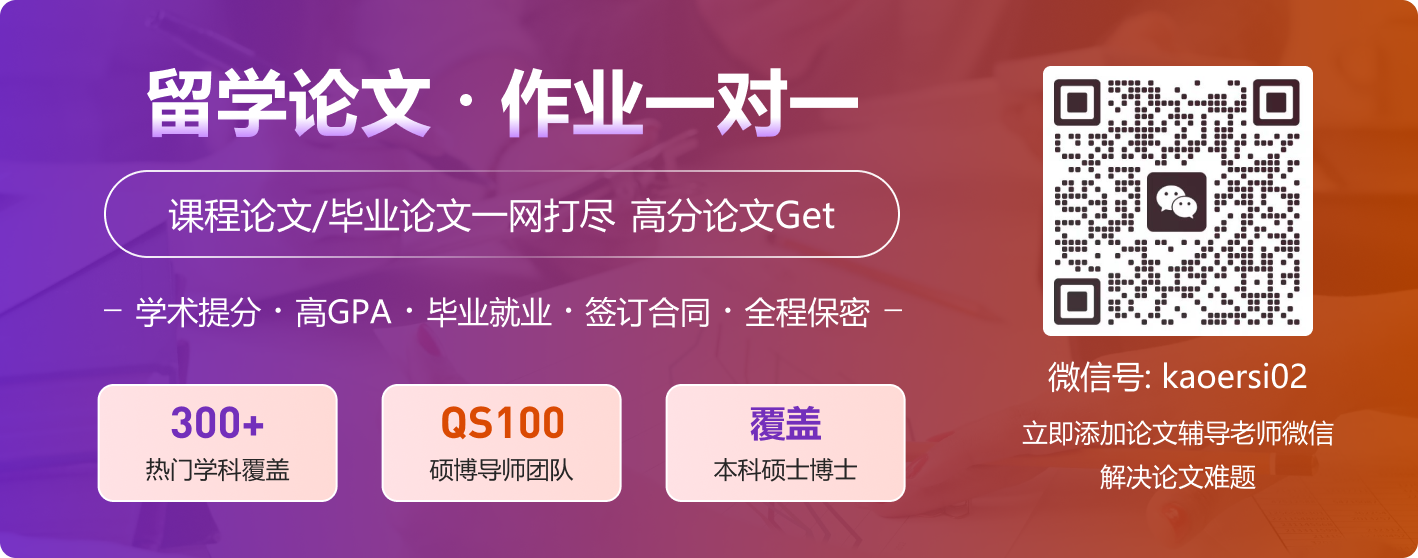Essay怎么写?这是许多留学生所面临的问题,而结构是经常被忽略但又至关重要的东西。特别是对于母语不是英语的我们来说,很多时候写不通不是因为内容没想好,也不是因为你不会写,而是你结构没理顺。
我们大多数留学生从小接受的是标准化考试训练,初高中作文模板一套套背,到了国外学术写作,也就很自然地套上那个熟得不能再熟的结构:
Intro – Body – Conclusion(五段式结构)。听起来很有逻辑,但如果你只会用这个框架,写出来的文章可能会有这几种毛病:
观点像流水账,读着读着就像在看一个Excel列表
段落之间毫无逻辑
文章开始和结束都很突兀,没有引和收的过程
那么问题来了如何不靠模板,怎么写出结构清晰又自然流畅的Essay?
今天就给大家介绍两个核心原则:
1.Known to Unknown
2.Effective Entry and Exit
这两个原则不是模板,不是套路,而是任何好essay背后的节奏感与逻辑感来源。
Known to Unknown
Known to Unknown:用旧信息引出新内容,让逻辑流动起来
这个原则特别适合我们这样逻辑已经很清晰但写出来不通顺的情况。它的底层逻辑其实很简单:
每句话(或段落)都从读者已经知道的信息开始,然后逐步引出你想说的新内容。用一句话
总结就是:从熟悉的起点出发,带读者走向新的视角。
这就好比你要带一个人逛校园,不会直接把他扔在教学楼门口说就在这里上课;你得从校门进来穿过图书馆,再慢慢走到教学楼,这一路走的过程,其实就是在让他跟得上你的节奏。学术写作也是一样。要让读者顺着你写的内容读下去,就不能跳。跳得太猛,他就跟不上了。
举个例子帮大家深入理解一下:
The University of Melbourne is one of Australias top research institutions. Each year, it welcomes a large number of international students who are drawn to its academic reputation and vibrant campus life.
Among them, Chinese students make up a significant portion of the international cohort. To better support this group, the university has launched several initiatives, including:
Mandarin-speaking mental health services
A peer mentorship program tailored for Chinese newcomers
现在我们来拆解一下这个段落是怎么从旧到新的:
第一句讲UniversityofMelbourne是名校是个总起。
第二句里的it指代上一句的学校,引出有很多国际学生这个新点;
第三句继续往下细化:international students中的中国学生;
第四句就顺理成章地讲:既然中国学生多,那学校为他们推出了什么服务。
你会发现,每一句话都不是凭空展开的,而是上一步信息的延伸。句子之间逻辑咬合,段落自然推进。这就构成了非常理想的思维流动。
那么旧信息具体包括哪些?
旧信息指的不是你写过的信息,而是读者已经知道、或者刚刚被你告知的内容。比如:
文章开头说的背景(政策、数据、现象);
前一段的结尾、核心论点;
通识性知识(climate change is a global challenge等);
你自己前面刚刚解释过的概念。
而新信息可以是:
新的现象、新例子;
你对旧信息的评论或转折;
新的细节、新的延伸话题。
这个原则,适用几乎所有的essay内容掌握这个节奏,就可以避免我们常见的跳段落话题生硬切换等问题。
只不过用法稍有不同,下面我来分类说说:
类型一:举例分析段(Example-Analysis)
这是我们写Essay最常用的段落类型了,比如在讨论消费者心理、文化身份、社会现象等问题时,你经常需要抛出一个例子分析这个例子。
例子:
Fast fashion has long been criticized for its exploitative labor practices. One prominent example is Shein, a brand that has been accused of relying on low-cost manufacturing in under-regulated factories.
These practices not only raise ethical questions, but also point to a larger issue: how profit-driven production contributes to environmental degradation.
分析:
第二句中的one prominent example呼应第一句;
第三句的these practices承接前一句的具体内容;
接着才引出新一层分析环境影响作为新信息这种写法不但自然,还具有一种节奏感一你可以像在说服别人一样,一步步把人带进去你的话语逻辑里。
类型二:文献递进段(Literature-led Discussion)
特别适合写文献综述(Literature Review)或者理论支撑部分。
例子:
While Smith (2020) emphasizes the empowering nature of social media in enhancing self-expression, this optimistic view has been challenged by Brown (2019), who points out a growing trend of anxiety and self-comparison among users. Building on this tension, Li (2021) proposes a more nuanced perspective: that the effect of social media is not universal but heavily dependent on individual usage patterns.
分析:
这种结构的最大好处就是:你在引用别人的观点时也有逻辑顺序,而不是简单罗列。
类型三:理论实例段(Concept-Application)
你经常要把一个理论概念应用到现实案例中去。这种时候,OldtoNew也很好用。
结构示意:
First sentence:复述理论/提出理论模型
Second sentence:转向某个现象或案例
Third+:解释案例如何体现或挑战该理论
例子:
Bourdieus concept of cultural capital suggests that social advantage is often reproduced through subtle cultural knowledge and taste.
This theory is particularly evident in elite private schools in the UK, where students not only receive academic instruction but also internalize habits of dress, accent, and etiquette.
Such invisible learning often positions them advantageously in university admissions and professional interviews.
再强调一次这个核心节奏:
start with something knownend with something unknown下一段再把这个known变成unknown
像滚雪球一样,让文章一段带一段、信息一层叠一层,读起来才会顺。
Effective Entry and Exit
Effective Entry and Exit,也就是essay的头尾设计怎么开头、怎么结尾。
很多人写Intro的通病是太快切入主题,比如一开头就是本文将探讨对Y的影响,看着就像教案,毫无阅读欲望。你要知道,读你文章的人并不是你朋友,他不天然地对你这个主题感兴趣。你得先花一点心思把他请进来。我们还是拿写加拿大超市食物浪费这个主题来举例
子。如果你这么开头:
Food waste is a major environmental problem in the Canada.
虽然是事实,但非常冷场。
但如果你换成这样:
Every evening, as supermarkets across the Canada restock shelves with fresh produce, tons of unsold items from earlier in the day quietly end up in bins.From sandwiches barely past their best before dates to bananas with a single brown spot,the waste adds up quickly.
是不是立刻画面感就来了?你感觉作者好像在跟你说话,而不是交作业。这就是一个合格的Effective Entry。
好的开头不是直接说事,而是把你拉进场景。
你可以用:
数据开头(吓人一点的那种效果更好);
一个具象小场景;
一句提问,引发共鸣;
一个真实故事、轶事、引用。
同理,结尾也别急着走人。
很多同学写Conclusion时,要么机械地总结观点,要么突然矫情一段,然后草草收尾,像是急着赶末班车。但好的结尾,是要让读者带着点东西离开的一也许是一次反思,一种可能的行动建议,一个温柔的情感出口。
像这样:
As young consumers navigate between affordability and sustainability,the choices we make at the checkout line might shape more than just our dinner plansthey shape the planets future.
或者更有参与感一点的:
Maybe next time you reach for that perfectly ripe avocado, its worth asking how many others just like it ended up in the bin?
简单理解:
Effective Entry:别上来就讲干货,要铺垫;
Effective Exit:别说完就走,要留念。
那么现在我们来拓展一下这个思路:不止是怎么开,而是如何打开和收住一整篇Essay的节奏。
Effective Entry的三步策略
Step1:定位读者知道什么
写开头最怕的不是没写对,而是写得太宏观或者写得太细节。如果你写的是留学生文化适应问题,直接从全球化或者人类迁徙史切入,读者会觉得跑太远;但如果上来就是我朋友最近很焦虑,又显得太个人化、不academic。
所以我们建议用中层引子:
一条有代表性的数据(引起震惊)
一种大家都能共感的生活场景
一则相关新闻、社会事件
示例:
In 2023, over 40% of international students in Australia reported experiencing symptoms of anxiety within their first semester.
While cultural adaptation has long been a topic of research, the rising mental health concerns among young global learners warrant fresh attention.
这类开头既能激发共鸣,又不失学术感
Step2:逐步收窄话题
从大背景逐渐聚焦到小问题,然后再定位你要写的点。
继续上面的例子,下一段就可以这样接:
Among the various factors contributing to this trend, the role of online communities in shaping students adaptation processes remains underexplored. This essay investigates…
这就是从读者熟悉的背景具体研究角度明确你的切入点的Effective Entry。
Effective Exit的三种思路
不是总结,而是递送。就像一个演讲的结尾:你想给听众留下什么印象?
思路一:带出更大的意义
比如你写的是某种社会现象,不妨问问自己:
如果这个问题得不到解决,会怎样?
这个讨论可以延伸到什么领域?
例子:
Addressing microaggressions in university classrooms is not just about creating comfortits about ensuring that education remains a space where every voice feels valid and every mind has room to grow.
思路二:回到开头的hook
这是文学中常用的技巧,叫做call back,非常适合留学生写essay。比如你开头讲食堂饭不好吃让人想家,结尾就可以:
Perhaps its not just about food, but about belonging.And for many international students, even a small bowl of soup might mean finding a piece of home far away.
这种首尾呼应的写法,特别容易打动人。
思路三:提出反问or轻微情感投射
可以是反问、设想、或未来展望,不用太煽情,但要有人味。
例子:
If universities can provide orientation sessions and language classes,why not also provide emotional orientation?A soft landing matters just as much as a safe one.
我们不是为了写得好看,而是为了让你的内容被理解。一篇好Essay不是让你炫技,而是让读者在读完后真正明白你的思路。而这两个原则
Known to Unknown:
让读者跟得上你说的每句话;
Effective Entry and Exit:
让文章的入口和出口都自然、得体、有余韵;
正是实现这一目标最基础也最核心的写作工具。






